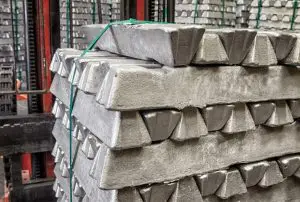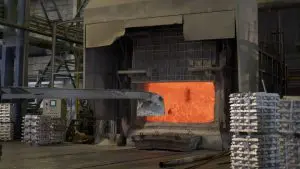In the manufacturing industry, precision die casting and molding have become the main methods for producing 3D models and objects.
Take a look around you; everything from kitchenware to expensive jewellery has undergone a complete transformation from its raw form to what it looks in its finished form with the process of molding and casting.
In fact, with the molding and casting process, it is possible to materialize any three-dimensional model from a computer program,
In this article, we will look closely at the differences between a mold and a cast.
Table of Contents
Definition of a mold
A mold is simply an impression of an object. The mold is used to capture the complete details of the object before a cast is produced.
Natural molds occur when organisms are buried under the earth for a long time and leave an imprint on the surrounding soil. Archaeologists are able to recreate the original size of an organism by using this mold.
For industrial manufacturing, mold can be artificially created inside a hollow space with the exact dimension of the design to be produced.
Molten metal will be poured into the hollow cavity and let to solidify until it captures the form within the mold.
Simple objects can be cast out of a single mold, while the complex design patterns like those required for automobiles die casting require multiple molds.
Several materials can be used for making molds, and it all depends on the desired size and shape of the object.
Clay, silicon, rubber, wax, polysulphide, plaster of paris are commonly used. Among these, plaster of paris is the most popular material for making mold mainly because it is cheaper and produces the best results.
Definition of a cast
This is the final step that follows a mold. A cast cannot be made without the absence of a mold.
Once the designers have finalized the design of the object, the required metal is heated to its molten temperature to form liquid metal.
The liquid metal is then poured inside the mold of the object to create a three-dimensional object. From a single mold, a multiple cast can be quickly produced. In industrial level manufacturing, this can go up to hundreds or thousands depending on the requirement until the mold has to be repaired or serviced.
The molten metal will be left to harden before a cast can be made.
Several materials can be used within the same mold, depending on the requirement. Materials such as resin, concrete, latex and plastic can be used for the casting process.
If the mold is created out of multiple pieces, the casting material can be injected through different openings.
Once the mold is made, it has to undergo several finer adjustments and finishing to create the complete object.
Different types of the casting process
Following are the different types of the casting process
Sand casting
The method is used to produce automotive parts like engine blocks. In this process, finely ground spherical grains are tightly packed to form a smooth surface.
The sand is strengthened by mixing clay which allows the particles to bond together more closely.
The process helps a moderate level of shrinkage during the cooling process and prevents the formation of cracks or tears on the surface of the cast.
Die casting
This process is used for molding the materials into high pressure. The molten metal will be injected into the die at a high temperature.
Metals such as zinc, tin, copper and aluminum are commonly used for die casting.
Once the process is completed, the solidified metal is removed from the idea, and any scrap metals are removed.
Shell mold casting
Also known as shell molding, the process uses resin-coated sand to make the mold. This process is preferable to sand casting mainly due to the dimensional accuracy that can be achieved with this method.
This process is used to cast small and medium parts that require high accuracy: low labour cost and better productivity.
Permanent mold casting
This process employs refillable molds. The molds will be usually made from metals. The molten metal is poured down using gravity; in some instances, vacuum or gas pressure is also used.
The most commonly used casting metals are copper, magnesium or aluminium. Other metals such as zinc, lead alloys, tin, iron and steel and graphite are also used in some instances.
Lost-foam casting
The process is composed of three continual steps. The first step is called coating. Here, the cluster is dripped into the slurry, and any excess is drained off to create a uniform surface.
The slurry is coated with coarse ceramic particles by dripping into a fluidized bed in the second step. This is done either by applying with hand or placing it under a rainfall sander.
In the final step, the coating is left to cool and harden. The process is repeated until the required thickness is reached. This is generally 5 to 15mm.
Centrifugal casting
The process is used to create long cylindrical pipes with the aid of centrifugal force created by spinning the mold.
The molten material placed inside the mold is flung into position to the interior surface of the mold. This will help to produce a casting that is free of voids.
Different types of the molding process
Here are some types of the molding process that are commonly applied within the die casting manufacturing industry:
Extrusion molding
This is the simplest form of the molding process. The process requires minimal technology.
The material to be cast is heated to a liquid state and poured inside the mold.
It is left to cool, and after solidification, the mold is removed.
The process is usually performed under low pressure and is commonly used for making intricate shapes.
Injection Molding
The process is used for casting three-dimensional objects with high dimensional accuracy.
Here the cast will be made of thick material, which will retain its dimensional accuracy even when the molten material is contained inside it.
Blow molding
This process is most commonly used for making plastic tubes. The material will be first heated until it is molten. This will be then injected into a cold mold which has a series of tubes placed within.
Air is blown in great force, which will result in the formation of tubes. The tubes will be left to cool and later removed from the mold.
Compression Molding
Since this method is quite labour intensive, this is used only for large scale production purposes.
The molten material is first poured on to the mold, and a second mold is pressed into it. This will squeeze the material into the desired shape. Once cooled, the material is removed from the mold.
Rotational molding
This method is used to make storage tanks, shipping drums, toys etc.
Objects are made by coating a mold from inside. The mold will be placed between two mechanical arms. After this, the arms continually rotate the mold while the molten material is placed inside.
Due to the rotating motion, molten material coats inside the mold, creating hollow objects.
Difference between a mold and a cast
Finally, let us understand the critical points of difference between a mold and a cast.
Materials used
The materials used for molding can be used for casting as well. But there are certain exceptions.
The materials chosen for casting are for a certain specific purpose. Most common materials include rubber, wax, polyester, epoxy resin, gypsum and polyurethane rubber.
Process of making
The cast is prepared through a process called casting, and mold is designed through a process called molding.
In the natural process, when an organism decays or dissolves, it will leave an impression on the surrounding soil. This can be taken up and later used to recreate the original structure of the organism.
At an industry level setting, molds can be prepared by wrapping the material used for molding around the desired shape.
Once the mold is prepared, a cast can be made by filling it with a specific material to make the finished product.



